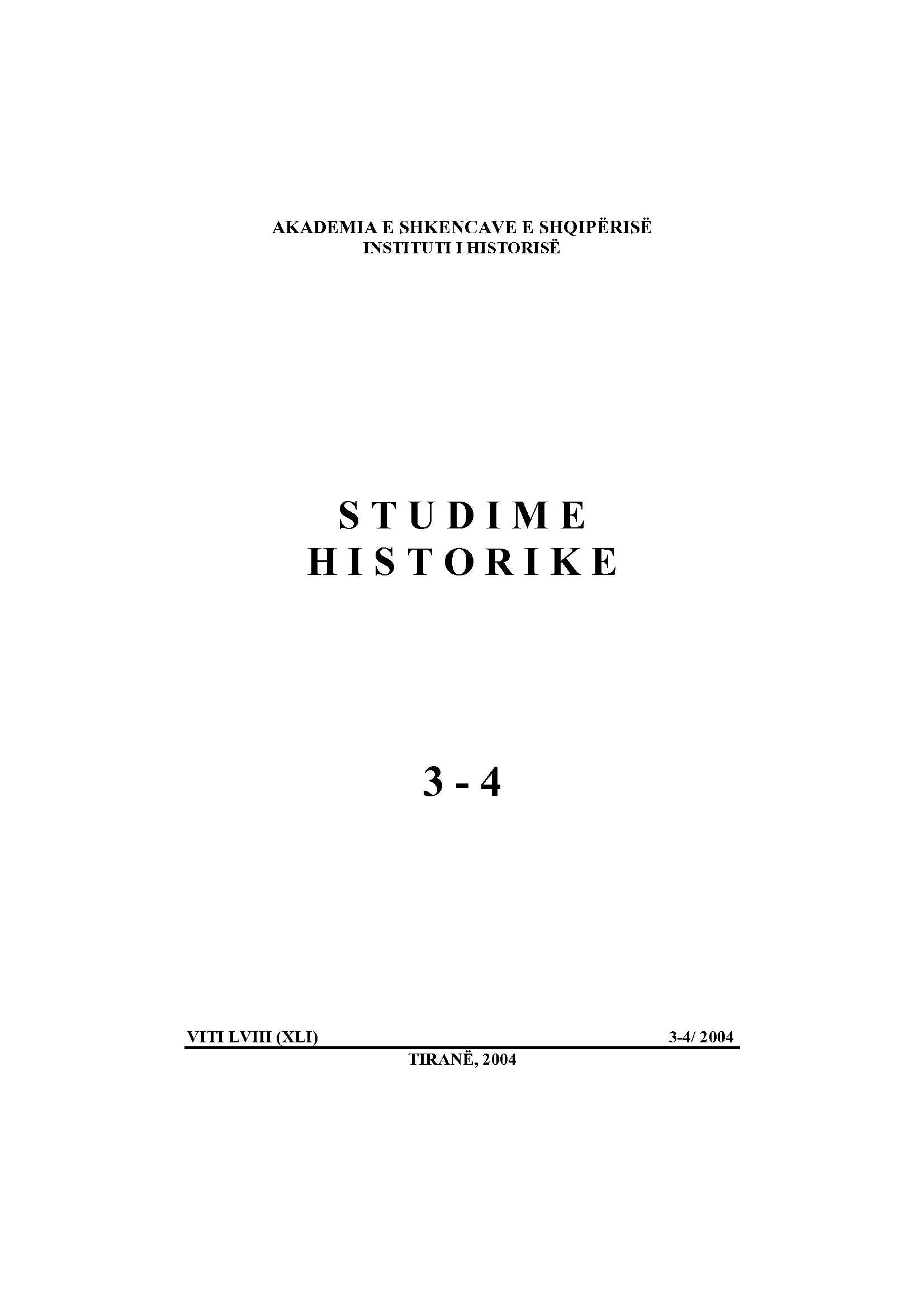FASADA BREGDETARE E SHQIPËRISË OSMANE Qyteti i Vlorës gjatë shek.XV-XVII
THE MARITIME FAÇADE OF THE OTTOMAN ALBANIA The town of Vlora during the XV-th – XVII-th centuries
Author(s): Ferit DukaSubject(s): History
Published by: Qendra e Studimeve Albanologjike
Keywords: Ottoman Albania; framework of the Ottoman rule; Vlora; Hebrew refugees expelled from Spain and Portugal; religious belonging of the town population; Kanunnamé of Vlora ; Albania; Albanian History;
Summary/Abstract: As it is known, Vlora was among the first towns of Albania comprised within the framework of the Ottoman rule. In the year 1417 this town together with Kanina was delivered over to the Ottomans by the local ruler Rugina Balsha. Together with Kruja, Berati and Gjirokastër, Vlora became an important supporting base for the extension of the Ottoman rule in the other Albanian regions. What’s more, with the administrative reorganization which made the Ottoman state in Albania in the 60-s of the XV-th century Vlora became the centre of the sandjak with the same name which was created newly. It was considered already by sultan Fatih as an important strategic base for the Ottoman infiltration in the western side of the Adriatic. Though it was one of the first towns comprised in the Ottoman rule, up to now in the early historical sources of an Ottoman origin there is almost no mention of this town, it is not reflected the town of Vlora. The Ottoman registrations for the sandjak of Vlora arrived up to our days belong to the end of the XV-th century (the time of sultan Bajazid II) and the XVI-th century. It is question for summarising defters (land register) (mücmel, icmal) and detailed (mufassal) which centain valuable data for the town and all the sandjak. Thanks to the geographical position and the privileged place it occupied in the political and military plans of the Ottoman state, Vlora in the XVI-th century ranks among the towns showing a rapid economic and social development. The dynamics of this development appears firstly in the original features of the demographic evolution of the town [...] The town of Vlora presents a very important specific feature when it is question for the religious belonging of the town population. Otherwise from many other Albanian towns, whose population after the establishment of the Ottoman rule in a greater part subjugated to the process of islamization, Vlora, at least until the year 1583, has preserved the Christian homogeneity of the indigenous population (here it is no question for the islamized notables or the Hebrew inhabitants). What’s more, it differs in this regard even it we compare it with the other towns of the same sandjak as Berati, Delvina, Gjirokastër etc., which at the end of the XVI-th century register not small percents of the islamized population. Being an important economic centre and a big source of incomes, at least from the beginnings of the XVI-th until the end of this century, the town of Vlora continued to be part of the sultans hase. Vlora was one of the most important customs point of the Adriatic administered on the basis of a particular regulations compiled by the Ottoman authorities. It was component part of the Kanunnamé of Vlora of the year 1583. In it were fixed all the rules on whose basis were collected the customs taxes for all the coming goods in the town from the sea as well the market taxes (bac-i bazaar) for every good coming from the surrounding lands.
Journal: Studime Historike
- Issue Year: 2004
- Issue No: 03-04
- Page Range: 007-016
- Page Count: 10
- Language: Albanian
- Content File-PDF

